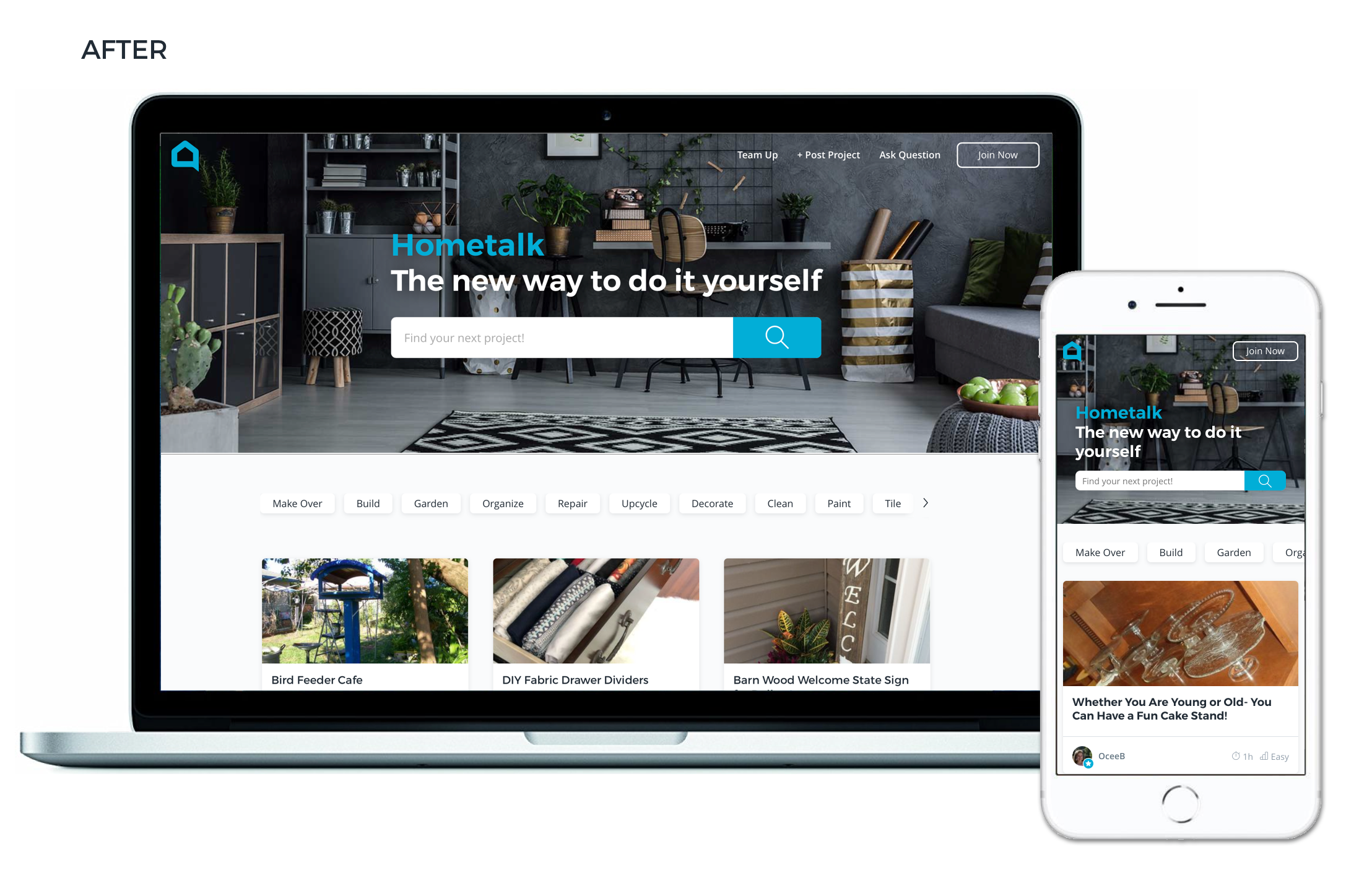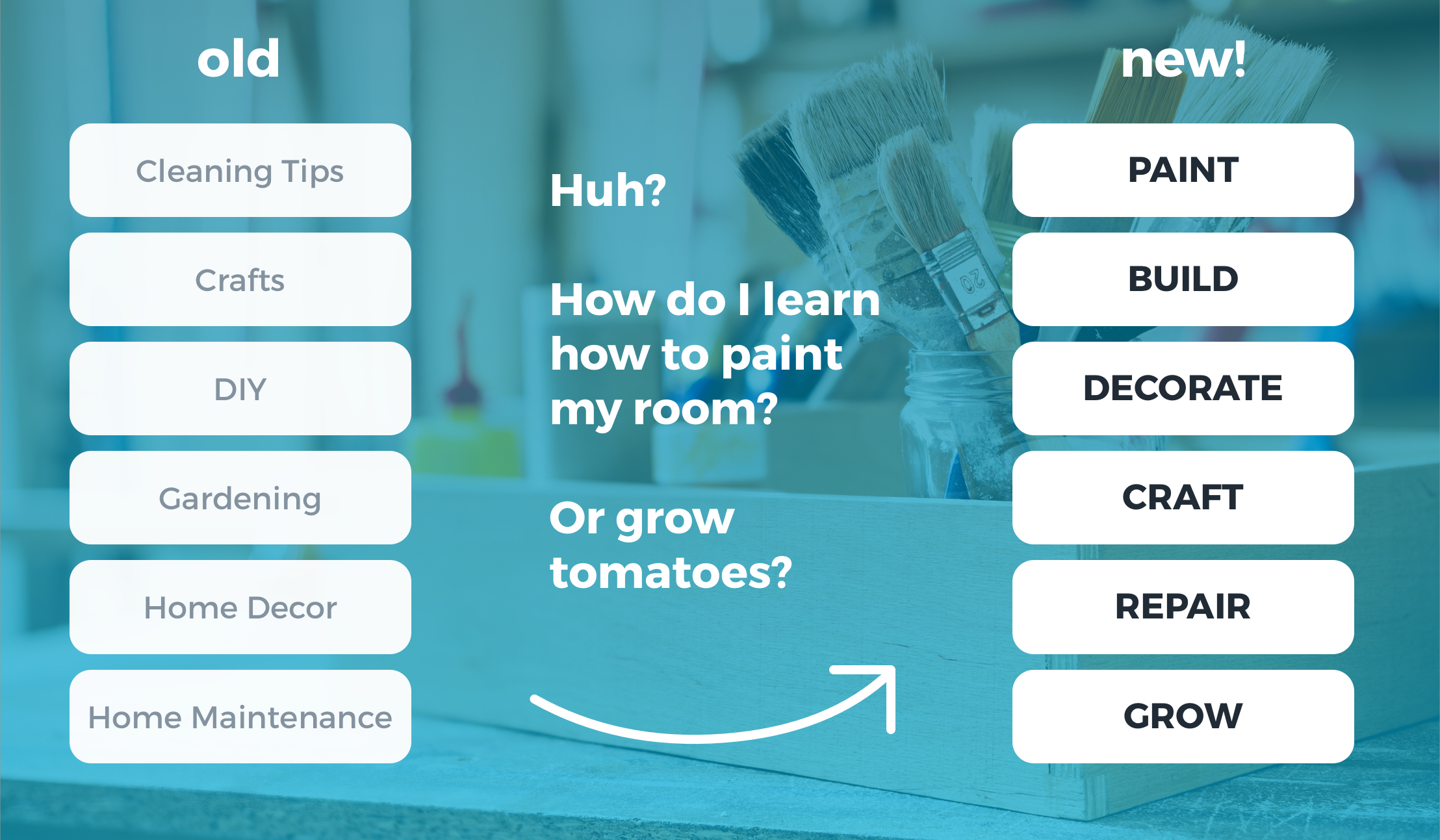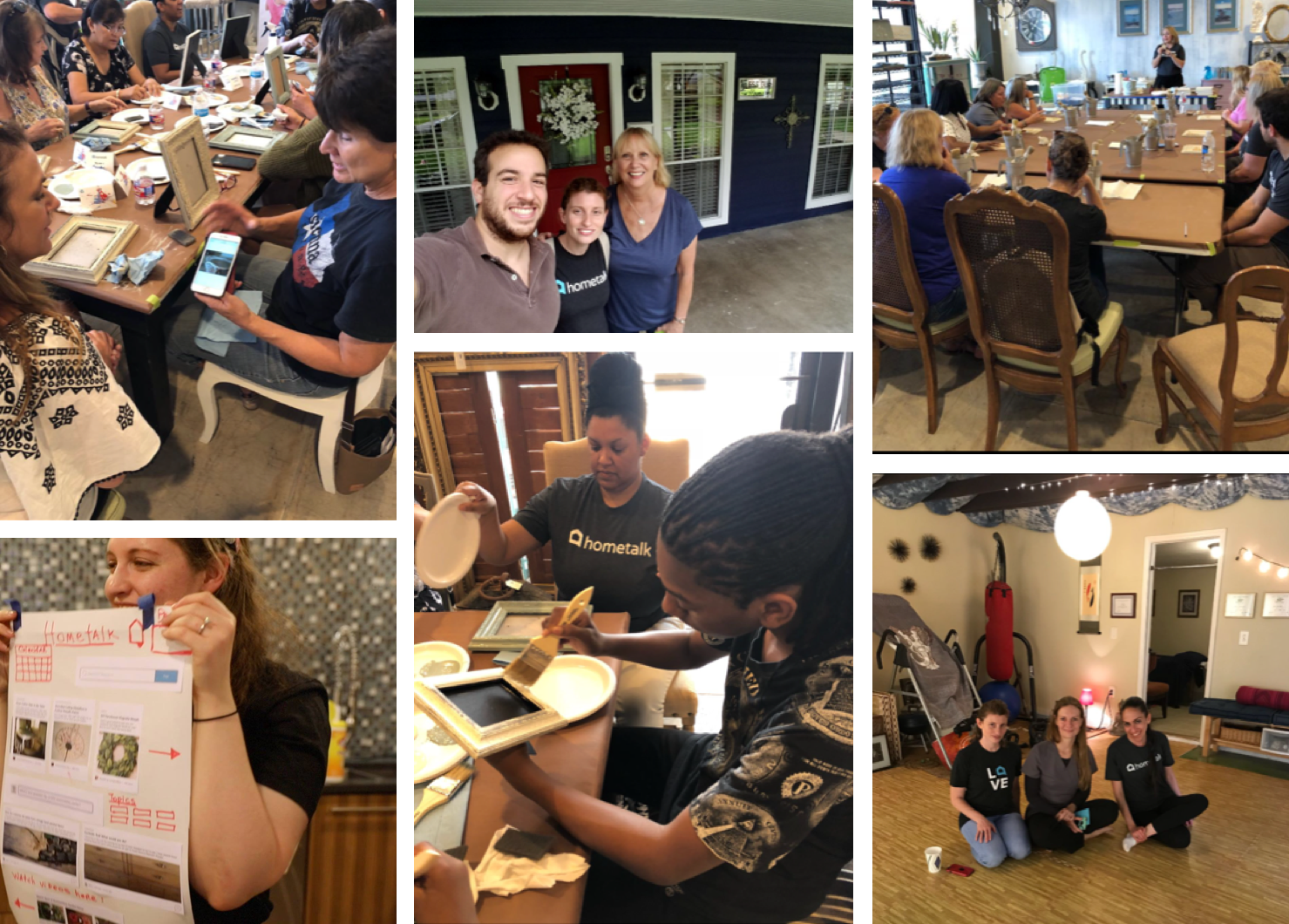Hometalk: The new way to DIY
Overview
Hometalk is the world's largest online DIY community, with over 16 million members worldwide. Members post tutorials that help others to fix, build, create and decorate their own homes without bringing in a pro to do it. As creative director at the company, I grew and managed a small team of product designers and content editors.
Services:
Creative direction
Branding
Content strategy
UX/UI
User research
Service design
The brand BEFORE
In 2016, the community was growing quickly, but the site was very outdated, cumbersome and difficult to read.
The brand and design system AFTER
We rebranded completely to be in line with the community’s spirit and raison d’etre: a sense of wanting to help others. Creativity, tinkering for the fun of it, being empowered and self reliant around the home is what motivates DIYers. The ideas of behind being a friendly, helpful neighbor informed the new design, with clear instructive typography and friendly curved elements in bold colors, as well as a suite of custom illustrations.
Content strategy
We restructured and re-categorized all of the content - over a million user generated DIY tutorials - so that things would be right where DIYers want them: under verbs that were easily accessible and navigate-able. This was done via a collaborative process involving research sessions with community members, the in-house content team, and SEO experts. We held focus groups, used card sort experiments and word games to create categories that matches user expectations of what they wanted to see.
When a user is experiencing an issue in their home - i.e. their drain is clogged, or their room needs painting, how do they expect to find advice? We categorized and optimized all the content into verbs, questions, and rooms that matched the needs of the use cases.
User research
Sometimes even DIYers need a little help from someone more experienced - so we began allowing members to get help with projects from more advanced DIYers. In advance of this launch, we ran user research focus groups and usability testing to better understand how members wanted to discover projects they could get help with, or assist others.
User research events
Learn how to create your own









